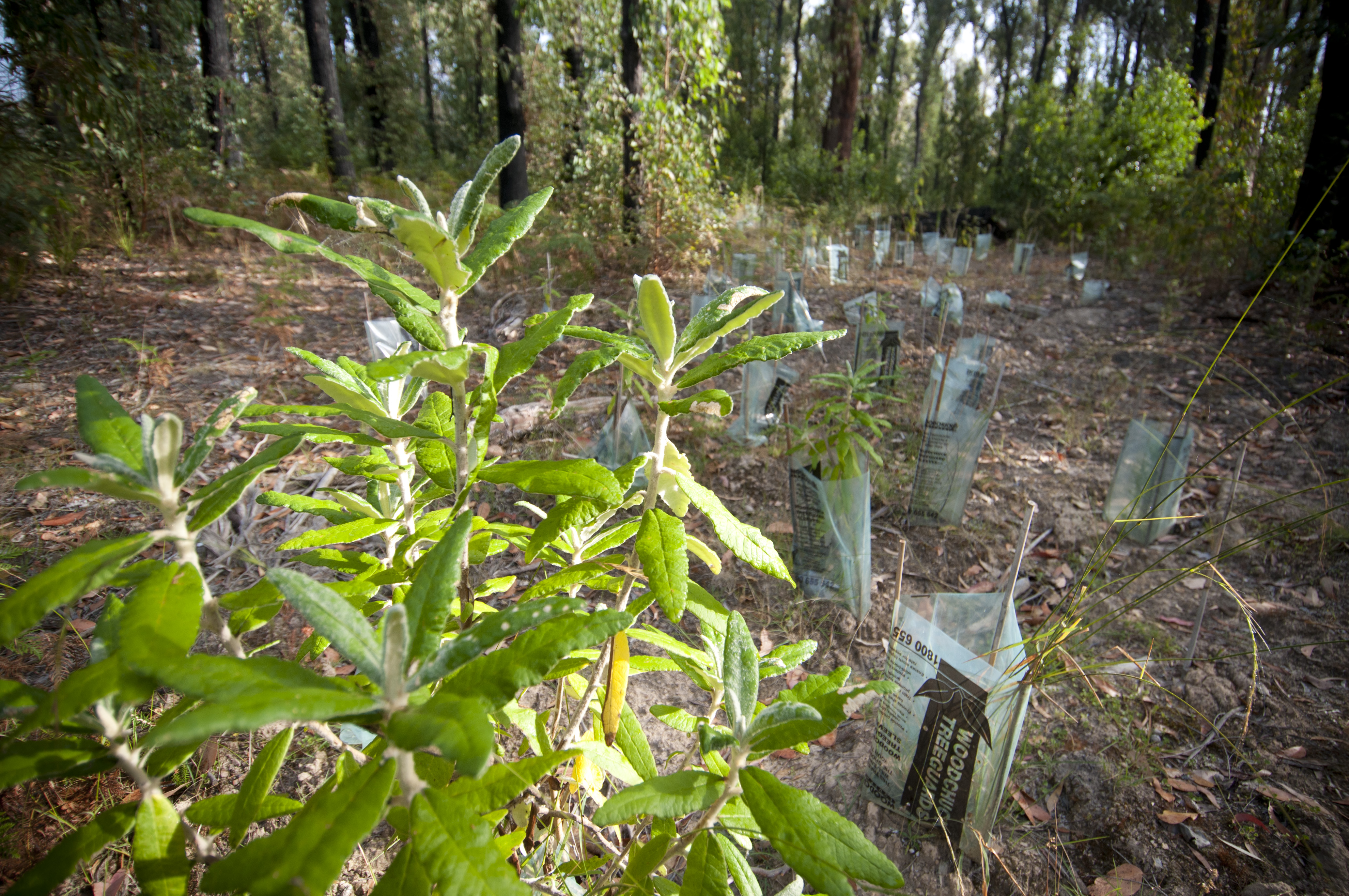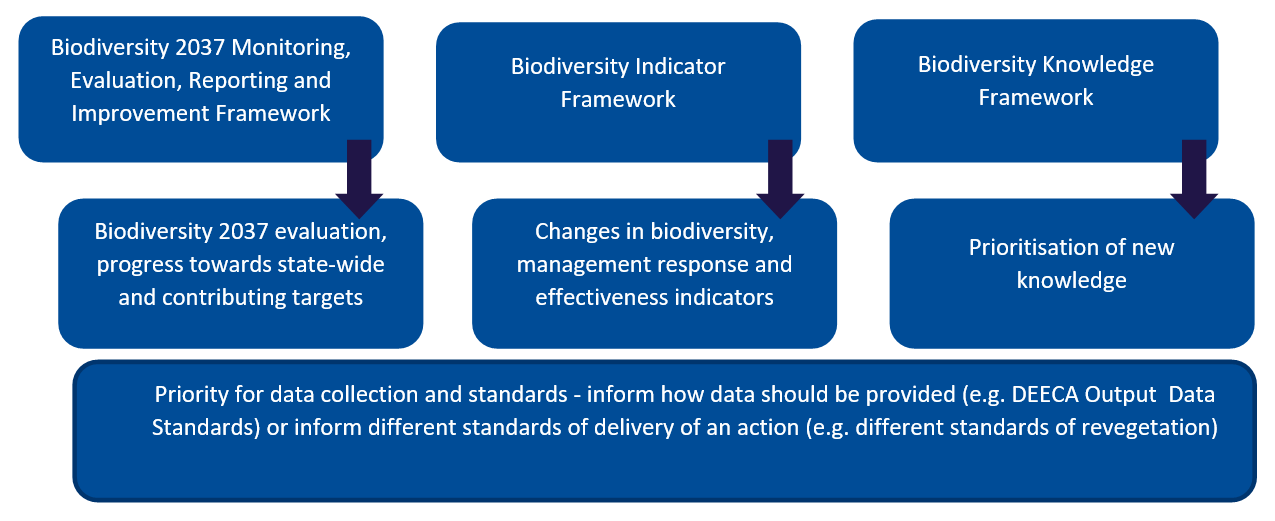The Biodiversity 2037 Monitoring, Evaluation, Reporting and Improvements Framework (Biodiversity 2037 MERIF) Version 2.1 is an important part of Victoria’s 20-year plan for the future of our biodiversity, Protecting Victoria’s Environment - Biodiversity 2037,(Biodiversity 2037).
The Biodiversity 2037 MERIF provides an overarching framework that:
- gives guidance to the biodiversity sector on the desired outcomes of Biodiversity 2037 and the pathways to achieving them through our activities.
- demonstrates accountability and transparency by outlining progress made in achieving the targets and goals set out in Biodiversity 2037.
- evaluates the implementation and effectiveness of Biodiversity 2037.
The Biodiversity 2037 MERIF is a living document and will be reviewed and updated regularly.
Biodiversity 2037 MERIF (Version 2.1) PDF
Biodiversity 2037 MERIF (Version 2.1) accessible DOCX

Frequently Asked Questions
What is the Biodiversity 2037 MERIF?
The Biodiversity Monitoring, Evaluation, Reporting and Improvement Framework (Biodiversity 2037 MERIF) provides an overarching framework for the monitoring, evaluation, and reporting of biodiversity related strategies, regulations and programs. Version 2.1 of the Biodiversity 2037 MERIF is the latest update of the document.
Who uses the Biodiversity 2037 MERIF?
The Biodiversity 2037 MERIF was developed for organisations and individuals that are undertaking actions that contribute to Biodiversity 2037.
What information is used in the Biodiversity 2037 MERIF?
The Biodiversity 2037 MERIF directly draws on the goals and methods outlined in Biodiversity 2037. These goals are informed by the latest ecological knowledge and modelling to understand, as much as possible, the impacts and effectiveness of our management actions.
How does the Biodiversity 2037 MERIF connect with Biodiversity 2037?
The Biodiversity 2037 MERIF provides the overarching framework for the evaluation of the implementation and effectiveness of Biodiversity 2037.
When and how will Biodiversity 2037 be evaluated?
Biodiversity 2037 will be evaluated every five years through a series of internal and external audits. These will assess performance, spending and alignment with goals. This evaluation will focus on if we are headed in the right direction to achieve the vision, targets and broad outcomes of Biodiversity 2037.
What is the logic framework?
The logic framework for Biodiversity 2037 describes the relationships between biodiversity activities, outputs, outcomes and how these are expected to lead to broad outcomes. It identifies key evaluation questions and informs adaptive improvements to the implementation of Biodiversity 2037.
How will progress be reported?
Progress against targets will be publicly reported annually, and released periodically on the department’s website and within the Biodiversity Indicator Framework.
When does the Biodiversity 2037 MERIF come into effect?
It is already being used. The Biodiversity 2037 MERIF has been used to evaluate the first year of Biodiversity Response Planning and to provide information to the State of Environment Reporting. The Biodiversity Knowledge Framework has already been used as the basis of the 2019 Knowledge Grants.
The Biodiversity Knowledge Framework
The Biodiversity Knowledge Framework supports the MERIF by identifying knowledge gaps and prioritising research that will improve our capacity to achieve the goals of Biodiversity 2037.
The Biodiversity Indicator Framework
The MERIF reports on biodiversity actions and the implementation of Biodiversity 2037. The Biodiversity Indicator Framework (BIF) supports the MERIF by recognising that monitoring and reporting on the changes occurring in Victoria’s environment are also key to achieving the vision and goals of Biodiversity 2037.

Figure: Connection between documents describing Biodiversity 2037 targets, broader biodiversity reporting, and knowledge acquisition. The Biodiversity 2037 MERIF provides the framework for evaluating the Biodiversity 2037 Plan and monitoring progress towards the state-wide and contributing targets, while the Biodiversity Indicator Framework (BIF) monitors and reports on biodiversity changes and actions across the state. The Biodiversity Knowledge Framework provides a systematic approach to identifying and prioritising new knowledge.
Page last updated: 26/02/25